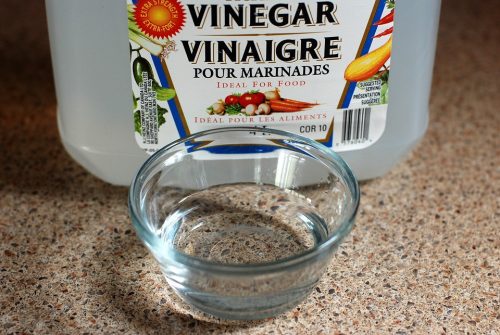How To Clean Your Coffee Maker
 Does your coffee taste bad? It may be time to clean and decalcify your coffee maker. A coffee maker provides an environment in which mold and yeast can grow. It needs to be cleaned regularly to ensure that your daily cup of coffee has a rich and natural taste and is free of bacteria. This guide provides practical tips on how to clean your coffee maker.
Does your coffee taste bad? It may be time to clean and decalcify your coffee maker. A coffee maker provides an environment in which mold and yeast can grow. It needs to be cleaned regularly to ensure that your daily cup of coffee has a rich and natural taste and is free of bacteria. This guide provides practical tips on how to clean your coffee maker.
Why it’s important to clean your coffee maker regularly
- A study found that the average home coffee maker reservoir has more germs than a toilet seat or bathroom door handle.
- Mold and yeast were found in the reservoirs of around half of coffee makers, and around 10% of them contained coliform bacteria.
- If mold and bacteria are allowed to grow, they will eventually affect our health.
- Hot water may not be enough to clean and disinfect your coffee maker.
- White vinegar is much more effective for cleaning and decalcifying your coffee maker.
- Besides disinfecting your appliance, white vinegar also helps to get rid of the minerals deposited by tap water.
How often you need to clean your coffee maker
- It’s best to wash the removable parts with warm soapy water after use.
- Some coffee makers even remind you when it’s time to clean them, so there’s no need for you to mark your calendar or set a reminder.
- The frequency of decalcification should depend on how often you use the appliance and how hard the water is in your area.
- If you use your appliance every day and get hard water in your tap, you may need to decalcify it around once a month.
- If you are in an area where your tap provides soft water, you can decalcify your coffee machine once in every two or three months.
- Clean and decalcify your coffee maker regularly, it will remain free of bacteria and will keep providing fresh, delicious coffee for a long time.
How to clean your coffee maker
- Wash all removable parts gently after use to prevent the formation of dirt, mineral deposits and coffee grounds.
- Dampness encourages the growth of mold, so leave the reservoir’s lid open to let it dry completely.
- The growth of mold is much more likely if you use your coffee maker and put it aside withhttps://www.consumeronlinereport.com/major-brands-consider-coffee-grinder/out cleaning it.
- Your coffee maker will become a fertile breeding ground for mold spores if it remains like this for a while.
- You can clean and decalcify your appliance easily at home. The things needed for this are usually available in every kitchen.
- There’s no need to take your coffee maker to a service center to get it cleaned and decalcified.
How to decalcify your coffee maker
Let’s get started and look at how to clean a coffee maker. Follow the steps given below to clean, sanitize and decalcify your coffee maker thoroughly:
- Empty and rinse the carafe and discard any coffee grounds remaining in the filter.
- Mix equal parts of water and white vinegar and fill the reservoir to its capacity with the mixture.

- Place a new paper filter in the empty basket.
- Commence a brew cycle and turn off the appliance half-way through it. Let the mixture stand for between half an hour and one hour.
- Turn on the coffee maker again and let it complete the brewing cycle.
- Throw away the water-vinegar solution and filter.
- Run another brew cycle with fresh water and a new paper filter. No vinegar is to be added.
- Discard the water and then run another cycle with fresh water and a new filter.
- Let the appliance cool slightly between brewing cycles.
- Check to see if any smell of vinegar remains before using the appliance to brew coffee.
- Wash the carafe and filter basket in warm soapy water.
- Rinse out the carafe, dry it and then wipe the exterior of the appliance with a damp cloth.
- You are now ready to make flavorful, germ-free coffee!
If you’re looking for a more thorough clean-up, you can replace the white vinegar with a coffee maker cleaner that’s available in stores. These products are specially designed to remove grime, dirt and stubborn mineral deposits.
We hope these tips on how to clean your coffee maker will help you to keep your appliance spotless and germ-free. It’s best to clean your appliance after use and to set a reminder to ensure that you will remember the periodic decalcification. This will help to ensure that your coffee machine will keep giving you delicious, hygienic coffee for years.
References:
http://www.huffingtonpost.in/entry/how-to-clean-coffee-maker_n_5861026
http://www.thekitchn.com/how-to-clean-a-coffee-maker-cleaning-lessons-from-the-kitchn-200908
http://www.goodhousekeeping.com/home/cleaning/tips/a26565/cleaning-coffee-maker/
